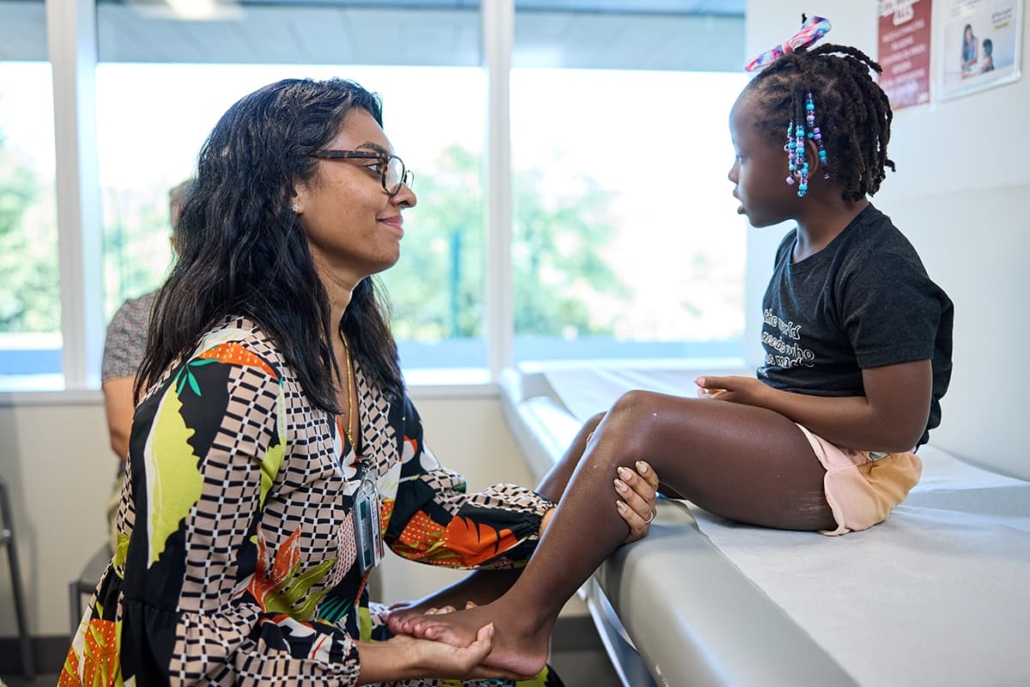New objective method set to transform dystonia assessment in cerebral palsy children
Washington University researchers have developed a quantitative technique measuring leg movement variability to accurately diagnose dystonia in paediatric cerebral palsy patients. The breakthrough identifies brain mechanisms underlying the condition, which could enable early intervention strategies to prevent this painful complication.
Cerebral palsy researchers have achieved a significant breakthrough in diagnosing dystonia, developing the first objective measurement technique for this painful movement disorder that affects more than half of the 345 children per 1,000 diagnosed with cerebral palsy in the United States. The innovative approach replaces subjective clinical assessments with quantitative measurements of leg movement variability, promising faster diagnosis and more targeted treatments.

Bhooma Aravamuthan, MD, DPhil, a paediatric movement disorders specialist at WashU Medicine, sees a young patient with cerebral palsy at the St. Louis Children’s Specialty Care Center in West St. Louis County on August 14, 2023. A new study led by Aravamuthan identifies an objective way to measure leg dystonia, a common complication of cerebral palsy in children. © Matt Miller/ Washington University School of Medicine
Diagnostic breakthrough addresses clinical challenges
The interdisciplinary study, led by Dr Bhooma Aravamuthan at Washington University School of Medicine in St. Louis, tackles a persistent clinical challenge. Dystonia—characterised by involuntary muscle contractions causing abnormal movements and postures—has traditionally relied on subjective physician assessment, leading to inconsistent diagnoses and delayed treatment initiation.
“An overarching goal of this work is about standardising dystonia assessment by quantifying diagnoses that were previously based on doctors’ gut feelings,” explained Aravamuthan, who initiated the research whilst being mentored by co-senior author Dr Jordan McCall.
The research team’s methodology evaluates leg adduction variability – the extent to which children’s legs move towards the body’s centre whilst seated. This straightforward measurement provides clinicians with an immediate, quantifiable assessment tool that can be implemented in any clinical setting.
Comprehensive validation demonstrates clinical reliability
Published in Annals of Neurology on 3 July 2025, the study comprised two complementary investigations. The clinical component involved eight paediatric movement disorder specialists from different American institutions evaluating video recordings of 193 children aged three and older with cerebral palsy performing seated hand tasks.
The specialists observed strong correlations between leg movement variability and dystonia severity, establishing that objectively measurable angular leg positions and movements towards the body’s midline serve as reliable disorder markers. This validation provides concrete guidelines that physicians can immediately implement for more accurate dystonia evaluation.
“These results can be immediately put into clinical practice to help guide treatment selection for children with cerebral palsy and ultimately improve patient outcomes,” noted Aravamuthan.
Mouse model reveals underlying neurological mechanisms
The study’s second component utilised sophisticated neuroscience techniques to identify dystonia’s causal brain mechanisms. Researchers focused on striatal cholinergic interneurons (ChIs), specialised brain cells in motor control regions responsible for coordinating smooth, purposeful muscle movements.
The team selectively stimulated these neurons in mice over 14 days, discovering that chronic ChI excitation produced increased leg movement variability comparable to human cerebral palsy dystonia patterns. Crucially, short-term stimulation failed to replicate these effects, demonstrating that sustained neuronal activity is essential for dystonia development.
This finding aligns with clinical observations that dystonia typically emerges weeks, months, or years following brain injury, suggesting a critical therapeutic window for intervention.
Therapeutic targets
The research identifies promising therapeutic targets, as medications already exist that reduce ChI excitability. However, current clinical practice administers these treatments after dystonia establishment, potentially explaining their variable effectiveness.
“Our work in mice suggests that if you give these medications early and prevent chronic excitation of these neurons, you may prevent dystonia from happening,” Aravamuthan observed.
This preventive approach represents a major shift from reactive to proactive dystonia management.
“We were able to establish concrete guidelines that physicians can use today to evaluate dystonia in patients with cerebral palsy more accurately,” Aravamuthan emphasised. “That will make treatment better for our patients as well as support drug development and future research that can rely on this consistent and reproducible assessment method.”
Reference
Gemperli, K., Lu, X., Chintalapati, K., Rust, A., et. al. (2025). Chronic striatal cholinergic interneuron excitation causes cerebral palsy-related dystonic behavior in mice. Annals of Neurology. https://doi.org/10.1002/ana.27299

